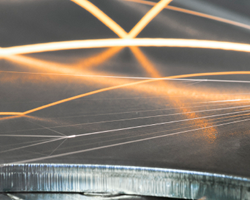Metal Fabrication: What Next for the Industry?
Sheet metal fabrication has been an intricate part of our country’s manufacturing industry for as long as we can remember, contributing to the production of crucial components in our everyday lives.
Interior and exterior furniture, construction materials, telecommunication products and even the jewellery we wear. All of these and more are produced using metal and, more often than not, involves the use of a laser cutter. Laser cutting has been at the forefront of sheet metal fabrication technology for some time now, forever evolving into new applications and inventions, the most recent being the creation of 3D printing.
But what is next for the sheet metal fabrication industry and the manufacturing sector as a whole?
What Lies Ahead?
The uprising of AI and robotics in the human world is an interesting concept. Industrial environments are seeing the benefits of robots being used in place of human workers. Acieta, an automation integrator based in Wisconsin and Iowa, presented an environment in the metal industry ran purely by artificial intelligence. The company that signed up to the trial use of robotics saw a dramatic reduction in lost parts and wastage.
Automated robots are able to work so much faster and much more precisely than a human workforce, so more often than not they can boost profits too. This is a crucial loss of human employment on the floor, but on the flipside an increase in production and profit heralds an increase in marketing, sales, maintenance and operational staff members.
Are Robots Selling?
The International Federation of Robotics (IFR) released their annual survey and in 2017 alone, they sold 381,000 industrial robots to companies. Around 10% of those sales was to metal fabrication companies.
In the long-run, it doesn’t seem as if robots will completely take over from the manual workers when it comes to sheet metal fabrication. Despite their efficiency, they are extremely expensive to purchase and maintain/fix when faulty, they do not inspire originality or creativity and will not improve with experience. At the end of the day – they just aren’t human!
3D Printing/Additive Manufacturing
Since its introduction, 3D printing (otherwise known as additive manufacturing) has been a strong and gradual influence on sheet metal fabrication. Companies like NASA have reverted to using 3D printers to produce components of their aircrafts because they can be produced and transported much quicker than manually constructing them by hand.
Prediction for the Future
Regardless of how you go about producing the metal required, there will always be the need for sheet metal fabrication. It’s an industry that is used widely by the military, energy conservation companies and construction businesses alike.
Many other traditionally-manual occupations have fallen by the wayside due to advancements in relevant technologies. Metal fabrication is an example of one that will only get better and more efficient.

